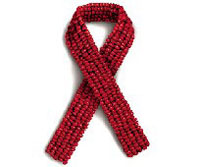For those of you who work in the field of HIV prevention, you’ve likely heard the news coming out of the 2010 International AIDS Conference in late July regarding microbicides. I’m a little late myself reporting on this, but given that I worked in the field of HIV prevention research, I’m pretty excited and wanted to share with those of you who don’t know.
Over the course of two years (2007 – 2009), a clinical trial testing a microbicide gel in women in South Africa took place. This trial, the CAPRISA 004 clinical trial, assessed the effectiveness and safety of 1% tenofovir gel in preventing HIV infection in women. Results showed that when used up to 12 hours before sex and 12 hours after sex, that the gel provided moderate protection from HIV infection for women. At the end of the trial, researchers found that tenofovir reduced HIV infections by 39% (and up to 54% in individuals who showed high adherence).
There are a lot of technical things that go into clinical trials and what these results mean, so feel free to email me to ask questions. I’ll do my best to answer them, or at least refer you to the right people. You can also check out the Global Campaign for Microbicides, AVAC, and The International Partnership for Microbicides for a more comprehensive explanation of what microbicides are, how they work, why they’re necessary, and what these trial results mean in the grand scheme of things.
Basically, what this means is that women, who due to gender inequities and powerlessness in relationships, may now have a new mode of protecting themselves from HIV infection. Some might ask why these women don’t use condoms – the fact of the matter is that many women in developing countries (heck, in developed countries) don’t have the ability to negotiate condom use with their partners. This leaves them susceptible to all sorts of infections, including HIV.
These encouraging results are only the beginning of a long road to providing a safe and effective HIV prevention product to women, but given more discouraging results released later last year, this is a great step forward. These results add fuel to the already burning fire and will eventually help to provide effective HIV-prevention products to the millions of women worldwide who most need them.
In the words of an advocate I met last week: “Doctors and scientists – please don’t stop your research. We are almost there.”
 There is a lot to be thankful for this year in terms of the AIDS epidemic, specifically the recent strides made in HIV prevention research. The CAPRISA 004 trial results and the recent results from the iPrEx PrEP effectiveness trial (which showed that once-daily Truvada reduced risk of HIV infection in gay men, transgender women and other men who have sex with men by an average of 43.8%) are something to be celebrated!
There is a lot to be thankful for this year in terms of the AIDS epidemic, specifically the recent strides made in HIV prevention research. The CAPRISA 004 trial results and the recent results from the iPrEx PrEP effectiveness trial (which showed that once-daily Truvada reduced risk of HIV infection in gay men, transgender women and other men who have sex with men by an average of 43.8%) are something to be celebrated!






